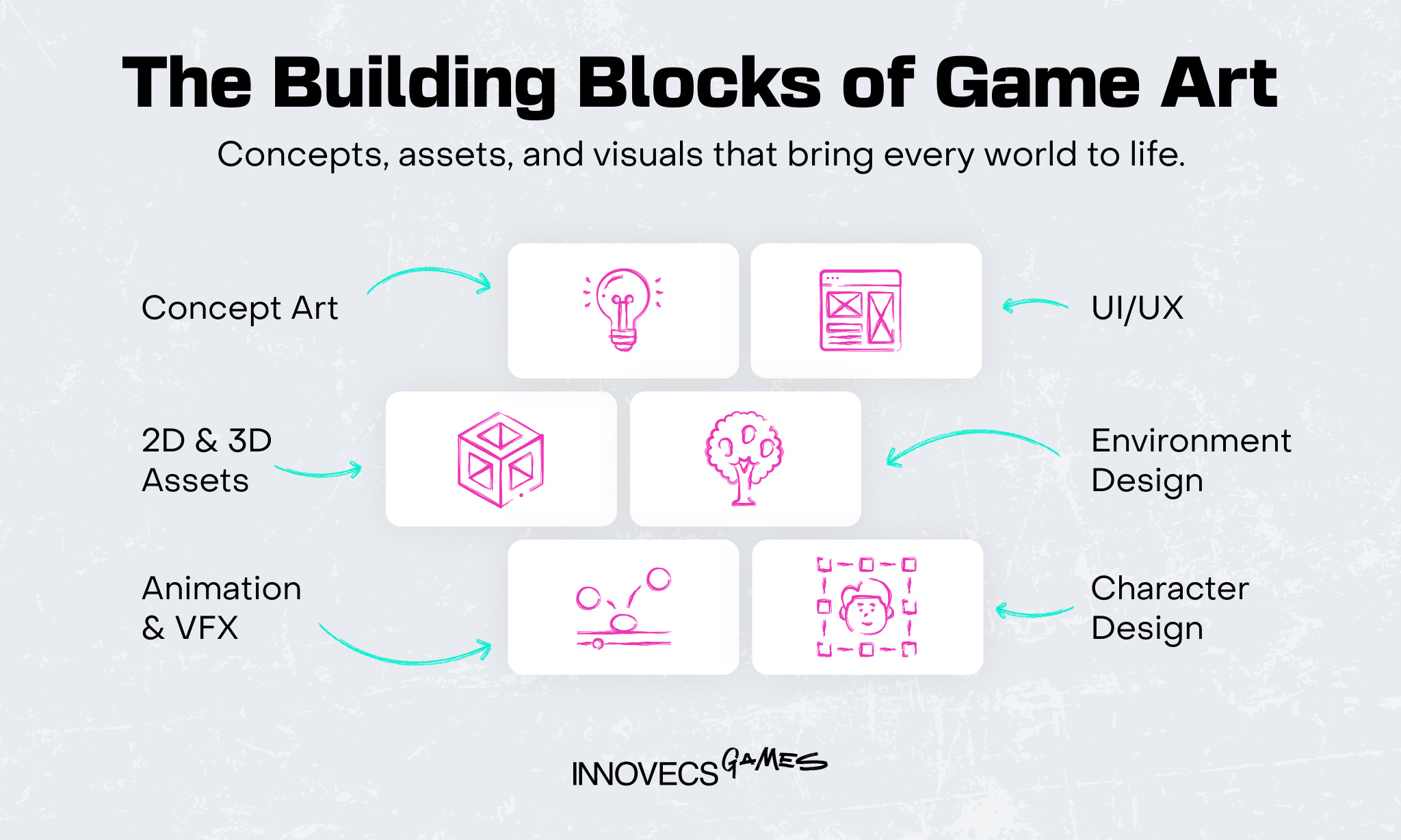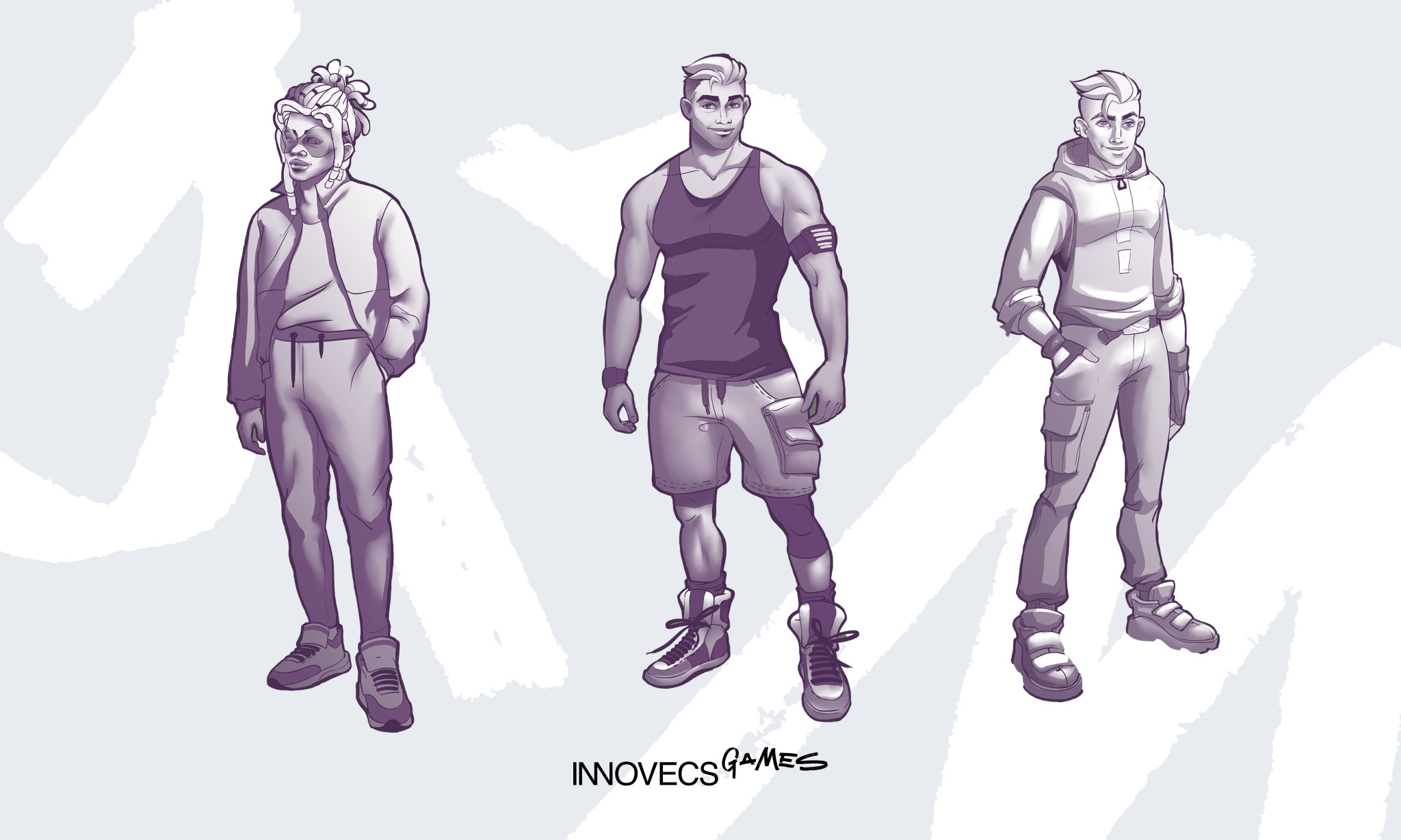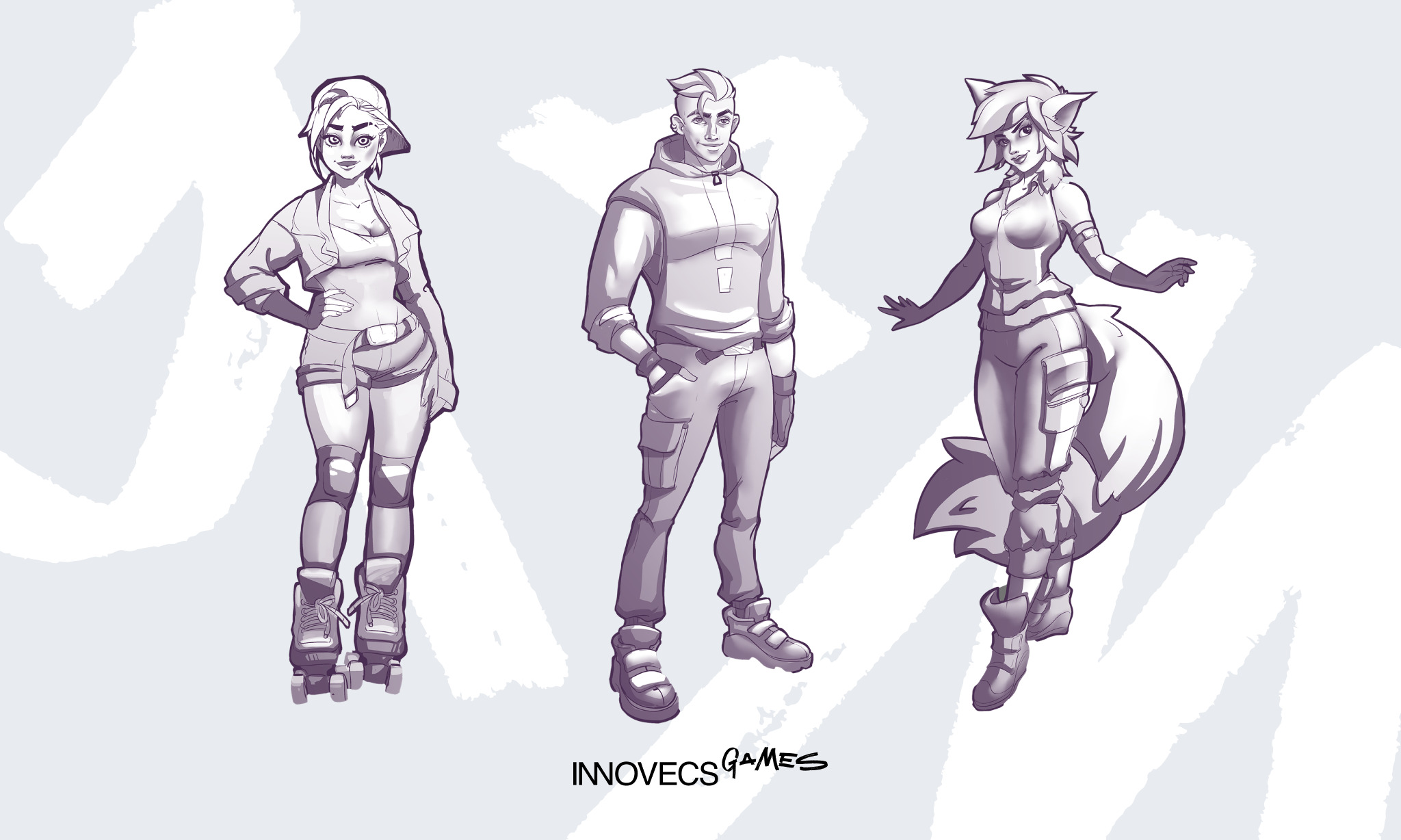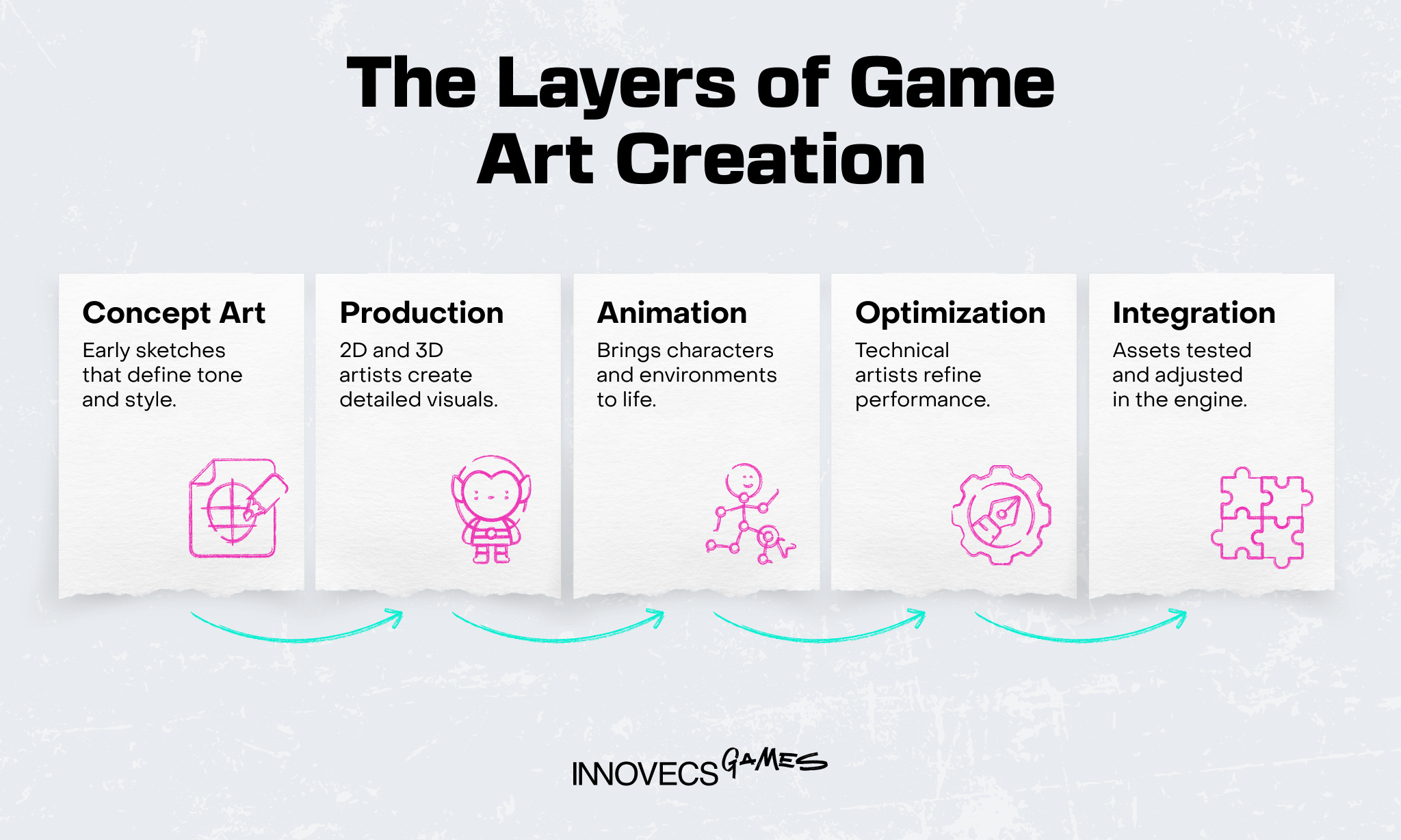When most people think about video games, they imagine the excitement of combat, the challenge of puzzle mechanics, or the satisfaction of reaching the next level.
Yet before a player ever presses start, it is the visuals that create the first impression. The atmosphere of a misty forest, the personality shown in a character’s face, or the playful look of a casual farming game all exist because of game art.
So, what is game art? At its core, it is the collection of visual elements that define the look and feel of a game world. Characters, environments, objects, and user interfaces all come together to build a cohesive experience.
Game art is a broad field. It includes concept art that sketches out the earliest ideas, stylized 2D visuals designed for clarity in mobile games, detailed 3D models created for realistic AAA titles, and even experimental approaches like pixel art in indie games. These styles require different skills, different art tools, and different production techniques, yet all share the same goal: to connect with players and make the world believable.
The scale of the modern gaming industry highlights just how important visuals have become. More than 212 million people in the United States play video games regularly, and that number continues to rise worldwide. High quality game art is not optional. It is what attracts potential players, sets expectations for the game, and influences reviews and long-term engagement.




